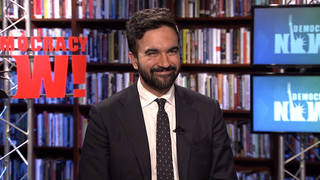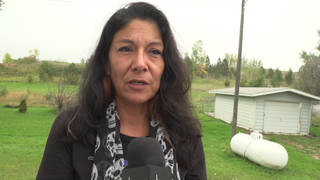Iran’s missile test came hours after the United States and Czech Republic signed a long-awaited agreement to station part of a planned US missile system on Czech soil. The Bush administration says the missile system would protect Europe from Iranian missiles, but it’s widely seen as a first-strike threat against Iran. The Czech Republic will host a radar site to go along with ten ballistic missiles based in Poland. In Prague, Secretary of State Condoleezza Rice joined Czech officials for a champagne toast to the missile agreement. Rice said the missile system should proceed regardless of who wins the November elections.
Secretary of State Condoleezza Rice: “We face, with the Iranians, and so do our allies and friends, a growing missile threat that is getting ever longer and ever deeper and where the Iranian appetite for nuclear technology, as to this point, is still unchecked. And it’s hard for me to believe, that an American president is not going to want to have the capability to defend our territory, the territory of
our allies, whether they are in Europe or whether they are in the Middle East.”
The missile plans await approval in Poland, where lawmakers have rejected US incentives as insufficient. The deal would come against a majority of public opposition in both Poland and the Czech Republic. In Prague, more than a thousand protesters crowded a downtown square after the deal was announced.
Protester: “This is not good for our republic, nor for Europe, nor for peace and security all around the world. People are against the radar for different reasons. Radar and missiles have no security nor defensive reasoning.”
Russia has also fiercely opposed the missile system plans. At the UN, Russian Ambassador Vitaly Churkin said the missile system would increase proliferation and the threat of military conflict.
Russian UN Ambassador Vitaly Churkin: “Every military action causes a military response. This is the fundamental rule. This is what military people are about. If there is a military action, if there is a change in strategic posture, there is a counter-change of strategic posture. You can read it in every military textbook. So there is nothing surprising. There are not even questions to be asked about.”










